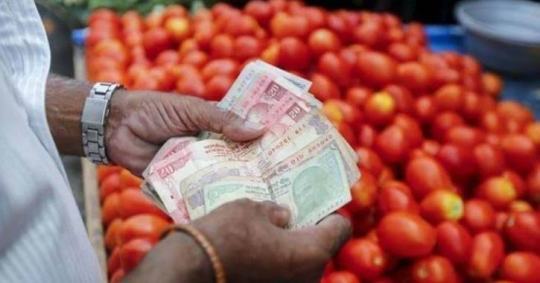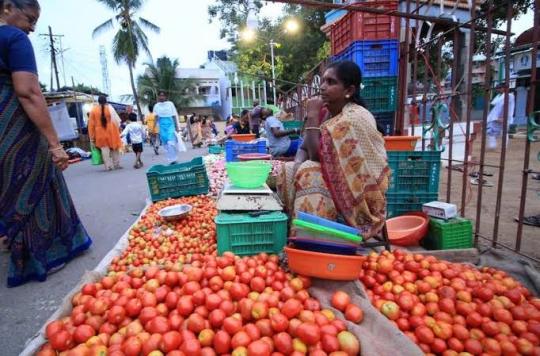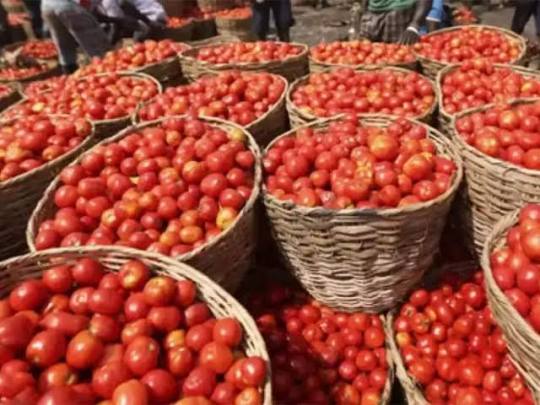#DemandSupply
Text
Unveiling the Mystery of Dynamic Pricing in Flight Ticket Booking
In the ever-evolving landscape of airline ticket booking, there's a phenomenon that often leaves travelers perplexed and sometimes frustrated: dynamic pricing. If you've ever searched for a flight ticket only to find the price mysteriously fluctuating within minutes, you've experienced dynamic pricing in action. But what exactly is dynamic pricing, and why does it seem to confound passengers? Let's delve into the intricacies of this pricing strategy and uncover the factors driving its implementation in the airline industry.
For more features please visit https://trailtravelz.com/
Understanding Dynamic Pricing
Dynamic pricing, also known as surge pricing or demand pricing, is a strategy wherein businesses adjust the price of their products or services based on various factors such as demand, inventory levels, time of purchase, competitor pricing, and customer demographics. While this strategy is employed across various industries, it has become particularly prevalent in the airline sector.
In the context of flight ticket booking, dynamic pricing means that the cost of airfare can change rapidly and frequently, even within short intervals. This means that two passengers booking the same flight at the same time may end up paying different prices, depending on when they initiate the booking process and a myriad of other factors.
Factors Influencing Dynamic Pricing in Flight Ticket Booking
Demand-Supply Dynamics: One of the primary factors influencing dynamic pricing in flight ticket booking is the interplay between supply (available seats) and demand (number of passengers seeking tickets). When demand is high and supply is limited, airlines may raise prices to capitalize on the situation. Conversely, during periods of low demand or excess capacity, prices may drop to stimulate sales.
Time Until Departure: The time remaining until the departure of a flight is a crucial determinant of pricing. Airlines often employ yield management systems that analyze historical data to predict demand patterns at different times before departure. As the departure date approaches and the flight fills up, ticket prices tend to increase, incentivizing early bookings.
Seasonality and Events: Seasonal trends and major events can significantly impact air travel demand and, consequently, ticket prices. For example, flights to popular tourist destinations may be more expensive during peak travel seasons, such as summer or holidays. Similarly, prices may surge during major events like music festivals, sporting events, or conferences held in specific locations.
Competitor Pricing: Airlines closely monitor the pricing strategies of their competitors and may adjust their own prices accordingly. If a rival carrier reduces fares on a particular route, others may follow suit to remain competitive, leading to dynamic fluctuations in ticket prices across multiple airlines.
Personalized Pricing: With the advent of big data and sophisticated algorithms, airlines can now tailor prices to individual customers based on their browsing history, purchase behavior, loyalty status, and other factors. This personalized pricing approach allows airlines to maximize revenue by charging different prices to different customers for the same seat.
Challenges and Controversies
While dynamic pricing offers benefits such as revenue optimization and flexibility, it also presents challenges and controversies, especially from the perspective of consumers. Some of the common concerns associated with dynamic pricing in flight ticket booking include:
Lack of Transparency: The opacity surrounding dynamic pricing algorithms can leave consumers feeling frustrated and distrustful. Without clear explanations for price fluctuations, passengers may perceive the process as arbitrary or unfair.
Price Discrimination: Personalized pricing practices raise ethical questions regarding price discrimination based on factors such as income level, purchase history, or geographic location. Critics argue that such practices may exacerbate inequalities and disadvantage certain groups of travelers.
Consumer Protection: The dynamic nature of pricing makes it difficult for consumers to predict and budget for travel expenses accurately. This unpredictability can be particularly problematic for budget-conscious travelers or those with inflexible travel plans.
Algorithmic Bias: Concerns have been raised about the potential for algorithmic bias in dynamic pricing systems, whereby certain demographic groups may be systematically disadvantaged or targeted for higher prices based on algorithmic assumptions.
Navigating Dynamic Pricing as a Consumer
While consumers may not have direct control over dynamic pricing practices, there are strategies they can employ to navigate the complexities of airline ticket booking:
Book Early: Whenever possible, book your flights well in advance to secure lower prices before they start to increase closer to the departure date.
Be Flexible: Flexibility with travel dates, times, and destinations can provide opportunities to find better deals, especially during off-peak periods.
Use Incognito Mode: Browsing for flights in private or incognito mode can prevent airlines from tracking your online activity and potentially adjusting prices based on your search history.
Sign Up for Alerts: Subscribe to fare alerts and newsletters from airlines or third-party travel websites to stay informed about price drops and special promotions.
Consider Alternative Airports: Exploring nearby airports or alternative routes may uncover cheaper flight options, particularly for regional or connecting flights.
Conclusion
Dynamic pricing has become a ubiquitous aspect of flight ticket booking, shaping the way airlines manage pricing and revenue. While this pricing strategy offers benefits in terms of revenue optimization and market responsiveness, it also raises concerns regarding transparency, fairness, and consumer protection. As travelers navigate the intricacies of dynamic pricing, understanding the factors driving price fluctuations and adopting savvy booking strategies can help mitigate its impact and secure the best possible deals.
#DynamicPricing#FlightBooking#AirlineTickets#PricingStrategy#TravelIndustry#DemandSupply#PersonalizedPricing#PriceFluctuations#ConsumerProtection#Transparency#AlgorithmicBias
0 notes
Text
The Soaring Tomato Prices in India: Factors, Consequences, and Potential Solutions

Introduction: In recent times, the skyrocketing prices of tomatoes in India have become a cause for concern among consumers, traders, and policymakers. This blog post aims to delve into the reasons behind the surge in tomato prices, analyze its impact on various stakeholders, and explore potential solutions to address this issue.
Factors Influencing Rising Tomato Prices:
Seasonal Variations and Weather Conditions: Fluctuations in tomato production due to seasonal changes, adverse weather conditions, and natural disasters can disrupt the supply, leading to price spikes.
Transportation and Storage Challenges: Inadequate infrastructure, inefficient logistics, and lack of proper storage facilities contribute to post-harvest losses, which further impact the supply and prices.
Demand-Supply Imbalance: A surge in demand, especially during festive seasons and periods of high consumption, coupled with insufficient supply, can drive up tomato prices.
Impact of Rising Tomato Prices:
Household Budgets and Inflation: Rising tomato prices can have a direct impact on consumers' monthly expenses and overall inflation rates, as tomatoes are a staple ingredient in Indian cuisine.
Farmer Income and Livelihoods: Higher prices may benefit tomato farmers in the short term, but long-term price volatility can impact their income stability and farming practices.
Food Processing and Restaurant Industry: Rising tomato prices can affect food processors, restaurants, and street food vendors, potentially leading to increased menu prices and reduced profit margins.
Potential Solutions and Mitigation Strategies:
Improved Agricultural Practices: Encouraging farmers to adopt modern agricultural techniques, use high-yielding tomato varieties, and implement proper crop management practices can enhance productivity and minimize losses.
Strengthening Supply Chain Infrastructure: Investments in transportation, cold storage facilities, and better market linkages can reduce post-harvest losses, improve supply efficiency, and stabilize tomato prices.
Diversification and Crop Planning: Promoting crop diversification by supporting farmers to cultivate alternative vegetables and implementing effective crop planning strategies can help manage supply-demand dynamics.

Government Interventions: The government can intervene by implementing price control measures, providing subsidies, and supporting farmer cooperatives to stabilize tomato prices and safeguard consumer interests.

Conclusion: The rising prices of tomatoes in India pose significant challenges for consumers, farmers, and the food industry. Understanding the underlying causes, assessing the impact, and exploring effective solutions are crucial for addressing this issue. Collaborative efforts between farmers, policymakers, and stakeholders across the supply chain are necessary to ensure a more sustainable and affordable tomato market in India.
Disclaimer: The information provided in this blog post is based on available knowledge up to September 2021. The tomato market is subject to dynamic changes, and the situation may have evolved since then.
#TomatoPrices#IndianAgriculture#FoodInflation#SupplyChain#CropProduction#WeatherImpact#PostHarvestLoss#DemandSupply#ConsumerImpact#FarmersLivelihood#FoodProcessingIndustry#InfrastructureDevelopment#CropDiversification#GovernmentInterventions#PriceStabilization#SustainableAgriculture#MarketLinkages#RuralDevelopment#AffordableFood#PolicyReforms
1 note
·
View note
Link
#behavioraleconomics#choice#competition#consumertheory#economics#externalities#introduction#market#marketfailures#marketstructures#microeconomics#monopolisticcompetition#monopoly#oligopoly#pricedetermination#producertheory#profitmaximization#scarcity#supplyanddemand#utilitymaximization
0 notes
Text
Banking service chronicle

Banking service chronicle published this article page no 1 it can be done by harvesting rainwater on rooftops and open spaces. harvesting rainwater also decreases the community dependence on groundwater for domestic use. besides bridging the demandsupply gap it can also save energy to pump groundwater as recharge leads to rise in groundwater table. these days rainwater harvesting is being taken up on massive scale in many states in the country. urban areas can specially benefit from rainwater harvesting as water demand has already outstripped supply in most of the cities and towns banking services chronicle monthly magazine.
0 notes
Text

WTI scales up near $83.00 amid demand-supply imbalance https://kryptobia.com/wti-scales-up-near-83-00-amid-demand-supply-imbalance/?utm_source=dlvr.it&utm_medium=tumblr
0 notes
Photo

#secondSourceIncome #prosumer #pandemicFighter #AirPurifier #needInStituation #demandSupply #getStartedNow #NowOrNever #LifeIsYours #BusinessProject (at India,Pune) https://www.instagram.com/p/CCfXVEDgoL1/?igshid=u3agmf2p4z6u
#secondsourceincome#prosumer#pandemicfighter#airpurifier#needinstituation#demandsupply#getstartednow#nowornever#lifeisyours#businessproject
0 notes
Text
Demand-Supply Scenario of Spindle Tapes Market to Remain Balanced During the Forecast Period 2013 – 2026 – Turned News
Demand-Supply Scenario of Spindle Tapes Market to Remain Balanced During the Forecast Period 2013 – 2026 – Turned News

Report Summary:
The report titled “Spindle Tapes Market” offers a primary overview of the Spindle Tapes industry covering different product definitions, classifications, and participants in the industry chain structure. The quantitative and qualitative analysis is provided for the global Spindle Tapes market considering competitive landscape, development trends, and key critical success factors…
View On WordPress
0 notes
Photo

💸 "All you need to know about Libra cryptocurrency and underlying blockchain network" by Sathapon Patanakuha (CEO, SmartContract Thailand) at #BangkokStartupWeek2019 🚀🚀🚀🚀🚀 #libra #cryptocurrency #digitalassets #fintech #bankdisruption #innovation #engineeringgrowth #money #demandsupply #changetheworld #learning #sharpenthesaw (at HUBBA Thailand) https://www.instagram.com/p/B0hWnIhFvrc/?igshid=17devbh9o1iin
#bangkokstartupweek2019#libra#cryptocurrency#digitalassets#fintech#bankdisruption#innovation#engineeringgrowth#money#demandsupply#changetheworld#learning#sharpenthesaw
0 notes
Link
The necessary information of the report starts with the inclusion of basic information as well as an overview of the market profile. It portrays information about key manufacturing technology and
0 notes
Text
Demand-supply balance steadies pepper | Business Line
Demand-supply balance steadies pepper | Business Line
[ad_1] Kochi, May 9: The pepper markets ruled steady on Tuesday on matching demand and supply. Sri Lankan pepper imported by paying 8 per cent duty is being offered at ₹550 a kg in the Indian market. Buyers were reluctant to buy because, they said high-range, high-bulk density indigenous material is available here at the same price. Wayanad pepper sold at ₹540 while Karnataka pepper was…
View On WordPress
0 notes
Text
Remote Diagnosis
My father is an experienced doctor at a remote area in Vietnam, and he complains about the quality of new doctors in the area. The best doctors all go to better cities; places like his town end up at the bottom of the list.
Meanwhile, many medical school students elsewhere need practice. Instead of sending them to intern at well-staffed hospitals, I wonder if there could be a remote diagnosis system connecting the best students with places like this to ease the supply-demand problem.
Language would be a barrier, but maybe can be facilitated with translators. It is easier and less expensive, after all, to train good translators than good doctors.
0 notes
Text
Waive newsprint import duty, say Covid-hit news publishers
Waive newsprint import duty, say Covid-hit news publishers
NEW DELHI: Newsprint cost has jumped 20% in the last three months due to demandsupply imbalance post pandemic, prompting news publishers to petition the government for waiver of 5% import duty to help cut cost. The industry has been hit hard due to Covid-19 led disruptions and the most newspapers have stopped sending newspapers to rural areas where there is less than 50 copies to reduce the…

View On WordPress
0 notes
Text
youtube
Watch the 2024 American Climate Leadership Awards for High School Students now: https://youtu.be/5C-bb9PoRLc
The recording is now available on ecoAmerica's YouTube channel for viewers to be inspired by student climate leaders! Join Aishah-Nyeta Brown & Jerome Foster II and be inspired by student climate leaders as we recognize the High School Student finalists. Watch now to find out which student received the $25,000 grand prize and top recognition!
#ACLA24#ACLA24HighSchoolStudents#youtube#youtube video#climate leaders#climate solutions#climate action#climate and environment#climate#climate change#climate and health#climate blog#climate justice#climate news#weather and climate#environmental news#environment#environmental awareness#environment and health#environmental#environmental issues#environmental education#environmental justice#environmental protection#environmental health#high school students#high school#youth#youth of america#school
18K notes
·
View notes
Text
Waive newsprint import duty, say Covid-hit news publishers | India News - Times of India
Waive newsprint import duty, say Covid-hit news publishers | India News – Times of India
NEW DELHI: Newsprint cost has jumped 20% in the last three months due to demandsupply imbalance post pandemic, prompting news publishers to petition the government for waiver of 5% import duty to help cut cost. The industry has been hit hard due to Covid-19 led disruptions and the most newspapers have stopped sending newspapers to rural areas where there is less than 50 copies to reduce the…
View On WordPress
#Breaking news#cost#DAVP#Google news#India#India news#India news today#Indian Newspaper Society#Industry#newsprint#newsprint cost#Today news
0 notes
Text
Steel prices: Domestic steel producers may come under pricing pressure
Mumbai | Kolkata: The novel coronavirus outbreak is likely to put pressure on domestic steel prices in the near term and increase downside risks for the sector due to a drastic supply-demand imbalance causing an inventory pileup, two reports released on Thursday said.
The Covid-19 outbreak is likely to adversely impact Indian steel prices, which have been witnessing an upward trend since November, ratings agency ICRA said in a report, while India Ratings & Research (Ind-Ra) warned that the demandsupply imbalance created globally will get worse with the virus spreading across the world.
“Domestic steel prices are currently trading at a discount of 7 per cent to landed cost from China,” said Jayanta Roy, senior vice-president at ICRA. “While this provides a headroom to domestic steelmakers to increase steel prices, the rising number of confirmed cases (of Covid-19) in India could add pressure to steel prices in coming months.”
Consequently, ICRA has revised its estimate of domestic steel consumption growth to 4-5 per cent in 2020-21 against its November 2019 forecast of 6.5 per cent. The Ind-Ra report said Indian steel producers would face pricing pressures of about $30 per tonne, which could result in margin pressures of $25 per tonne.
“The China steel market would continue to witness a demand-supply imbalance, which could result in price fluctuations continuing over March-May 2020 in the range of $30-40 per tonne,” it said. With the virus spreading to other steel-producing nations such as Japan, South Korea, the US and India, “it would keep steel prices depressed even in H2 of 2020” and could create a larger surplus globally of around 40 million tonnes with a bump-up in China steel exports in the second half of 2020-21, Ind-Ra said.
Ajay Kedia, director at investment advisory company Kedia Advisory, said, “Steel prices on ICEX (Indian Commodity Exchange) dropped by about 140 points on Thursday, trading at ?30,910 (a tonne), and sentiments remain weak as the domestic steel industry continues to face weak demand amid supply chain disruption with the coronavirus expected to keep domestic steel prices under pressure.”
Some industry executives believe the novel coronavirus outbreak in China could throw up tremendous opportunities for India. “In fact, Indian steel mills have already started getting bookings for exports and are waiting for the prices to get better,” said Ranjan Dhar, chief marketing officer at ArcelorMittal Nippon Steel India. “We could build on this opportunity. (Look at) auto components, for example. If there is disruption happening out of China, could those components be supplied from India?”
He said there will be a lot of reluctance globally to source steel from China due to the virus outbreak. “That reluctance will give a demand rise for steel mills, including the ones from India,” Dhar said. “Initially, the industry was negative but in the last one week we see it is getting stable.” Seshagiri Rao, joint MD at JSW Steel, said the novel coronavirus outbreak has led to a fall in global steel prices with raw material prices going up since “China did not reduce production to the extent we all anticipated”.
He said demand is going up in India. “Sentimentally, there is an impact within and outside China. It will have an impact on stocking and restocking, as there is a huge retail market in India in addition to OEM market.”
if(geolocation && geolocation != 5 && (typeof skip == 'undefined' || typeof skip.fbevents == 'undefined')) { !function(f,b,e,v,n,t,s) {if(f.fbq)return;n=f.fbq=function(){n.callMethod? n.callMethod.apply(n,arguments):n.queue.push(arguments)}; if(!f._fbq)f._fbq=n;n.push=n;n.loaded=!0;n.version='2.0'; n.queue=[];t=b.createElement(e);t.async=!0; t.src=v;s=b.getElementsByTagName(e)[0]; s.parentNode.insertBefore(t,s)}(window, document,'script', 'https://connect.facebook.net/en_US/fbevents.js'); fbq('init', '338698809636220'); fbq('track', 'PageView'); }
Source link
The post Steel prices: Domestic steel producers may come under pricing pressure appeared first on Invest Ops.
from Invest Ops https://ift.tt/32UdwLx
0 notes
Text
World-wide LNG Bunkering Market Will Grow with Remarkable Growth Rate
Growing adoption of liquefied natural gas (LNG) as a bunker fuel and technological advancements in ship-to-ship LNG bunkering are the key trends witnessed in the LNG bunkering market. LNG produces lower sulfur content and greenhouse gas emissions than traditionally used maritime fuels, such as heavy fuel oil, marine diesel fuel, and marine gas fuel.
The strict norms to restrict the sulfur content produced by conventional fuels is driving the LNG bunkering infrastructure demand, as the ships across various regions are slowly starting to adopt LNG as a fuel for propulsion. Moreover, reducing the sulfur content from conventional fuel requires high cost, which may hamper the economic viability of the same.
The expansion of the marine logistics market will be one of the major factors behind the LNG bunkering market growth. Maritime transport allows industrial development by supporting manufacturing, bringing together consumers, intermediate and capital goods industries, and promoting regional economic and trade integration.
LNG (Liquid Natural Gas) is an attractive alternative fuel for seagoing vessels and inland vessels, as liquefied natural gas emits fewer polluting substances. LNG is a potential substitute according to IMO emission prerequisites, owing to its negligible sulfur content and low production of NOx contrary to fuel oil and marine diesel oil. LNG is clean burning fuel coupled with financial points of interest on a calorific value basis among other fuels.
The global LNG bunkering market is driven by International Maritime Organizations regulations of sulfur emissions to 0.50% m/m (mass/mass) by 2020 in marine fuels, increase in sea-borne trade, particularly in terms of ton-km travelled, and low cost among ECAs. However, the demandsupply gap among LNG bunkers and vessels is expected to hamper the market growth.
The offshore vessels & ferries segment accounted for more than one-third share of the total market share in 2016, in terms of volume, and is expected to maintain its dominance during the forecast period, owing to its ease of transportation and loading. However, bulk & general cargo vessels are also expected to grow with high rate due to rise in demand for low sulfur fuels.
n 2016, Asia-Pacific and Europe collectively accounted for over two-thirds of the global LNG bunker market, by volume, though Asia-Pacific is expected to grow at a faster rate during the forecast period. High trade frequency from the emerging countries, such as South Korea, India, and China, is estimated to drive the market growth.
The major companies profiled in the report include, Skangas AS, Gasnor As, Statoil ASA, Barents Naturgass As, Engie SA, Bomin Linde LNG GmbH & Co. KG, Eni Norge AS, Harvey Gulf International Marine Llc., Polskie LNG SA, and Korea Gas Corp.
0 notes
Photo

#secondSourceIncome #prosumer #pandemicFighter #AirPurifier #needInStituation #demandSupply #getStartedNow #NowOrNever #LifeIsYours #BusinessProject (at India,Pune) https://www.instagram.com/p/CCfXJyOgnqO/?igshid=azpdhlr5koe4
#secondsourceincome#prosumer#pandemicfighter#airpurifier#needinstituation#demandsupply#getstartednow#nowornever#lifeisyours#businessproject
0 notes
Text
youtube
Watch the American Climate Leadership Awards 2024 now: https://youtu.be/bWiW4Rp8vF0?feature=shared
The American Climate Leadership Awards 2024 broadcast recording is now available on ecoAmerica's YouTube channel for viewers to be inspired by active climate leaders. Watch to find out which finalist received the $50,000 grand prize! Hosted by Vanessa Hauc and featuring Bill McKibben and Katharine Hayhoe!
#ACLA24#ACLA24Leaders#youtube#youtube video#climate leaders#climate solutions#climate action#climate and environment#climate#climate change#climate and health#climate blog#climate justice#climate news#weather and climate#environmental news#environment#environmental awareness#environment and health#environmental#environmental issues#environmental justice#environment protection#environmental health#Youtube
17K notes
·
View notes